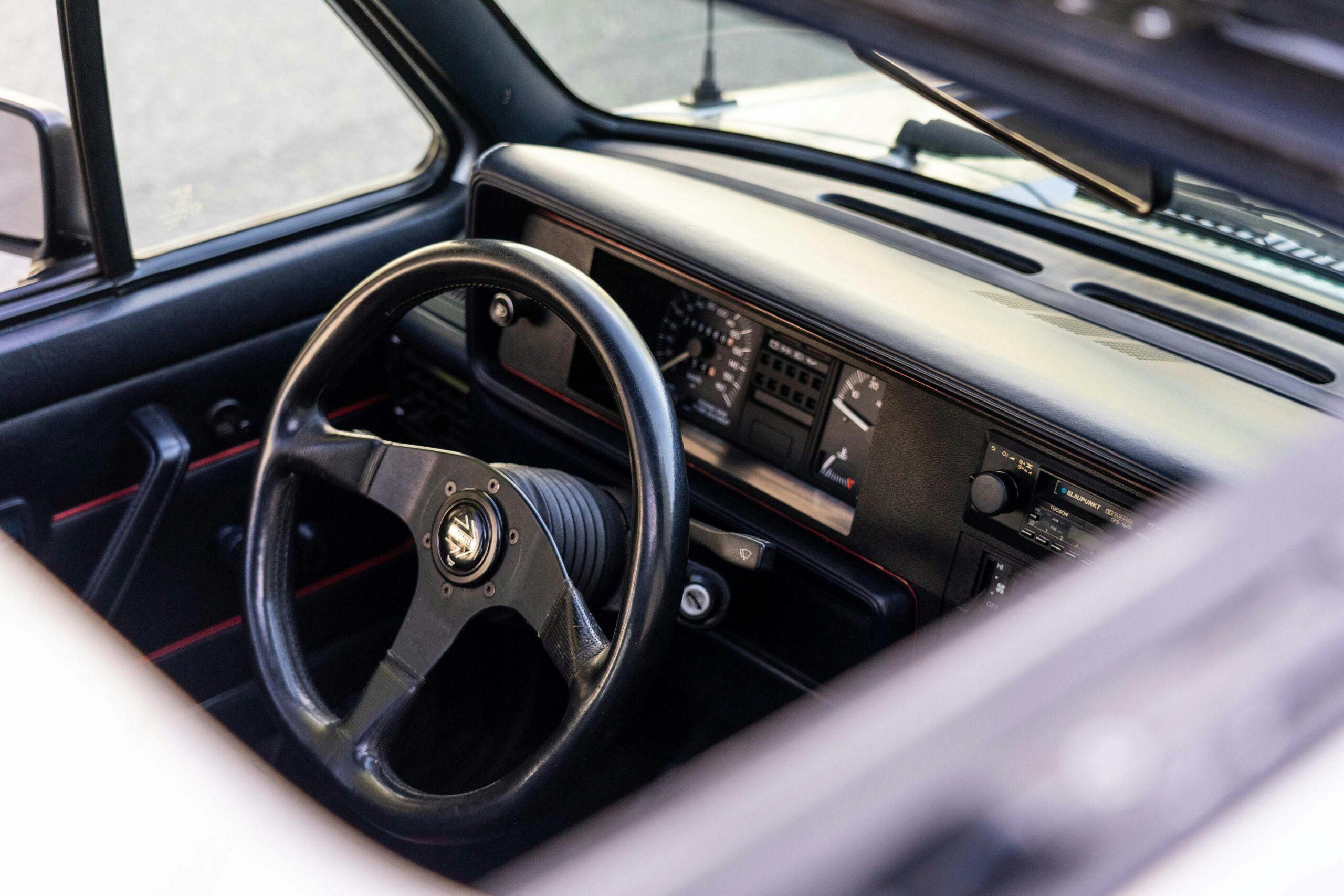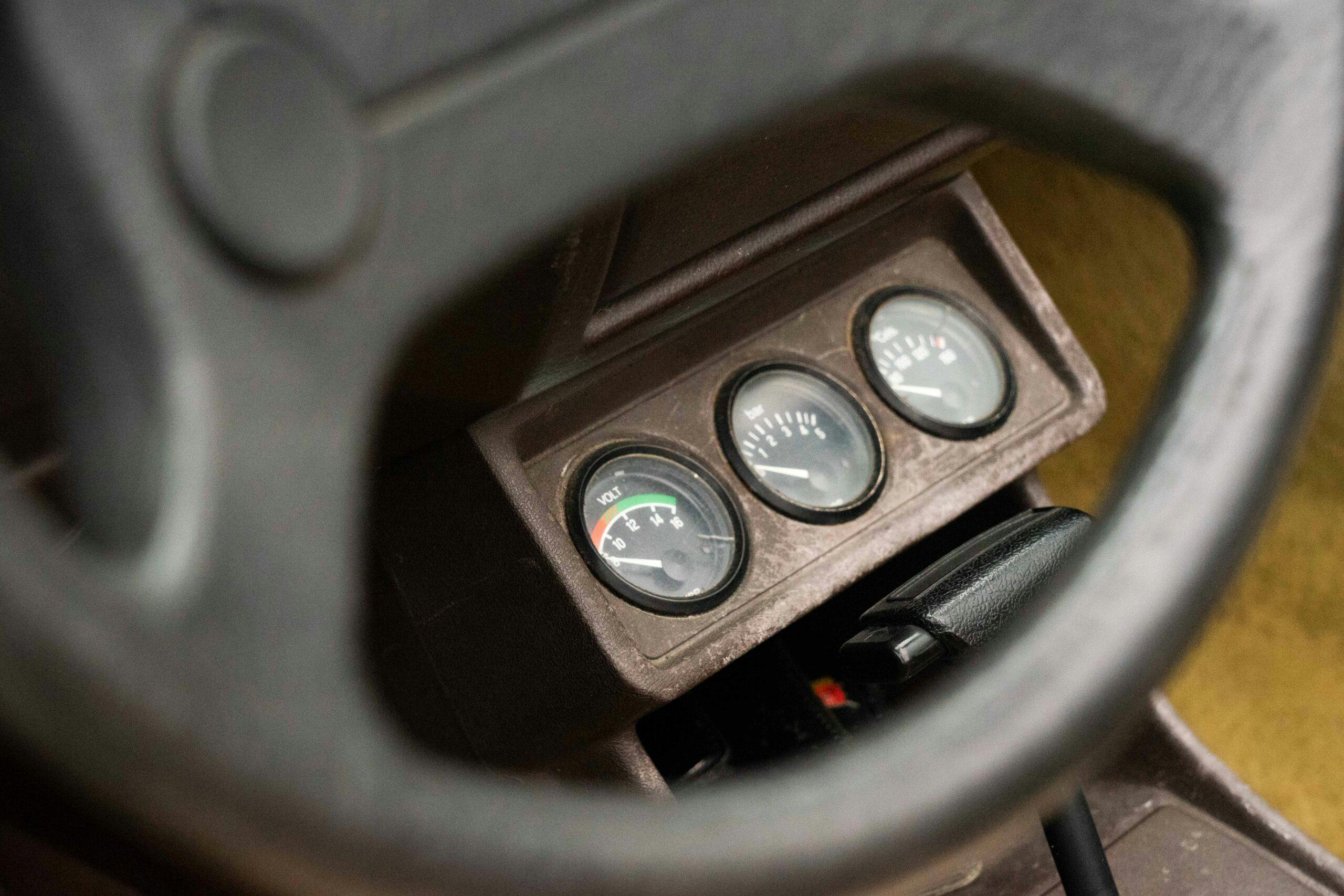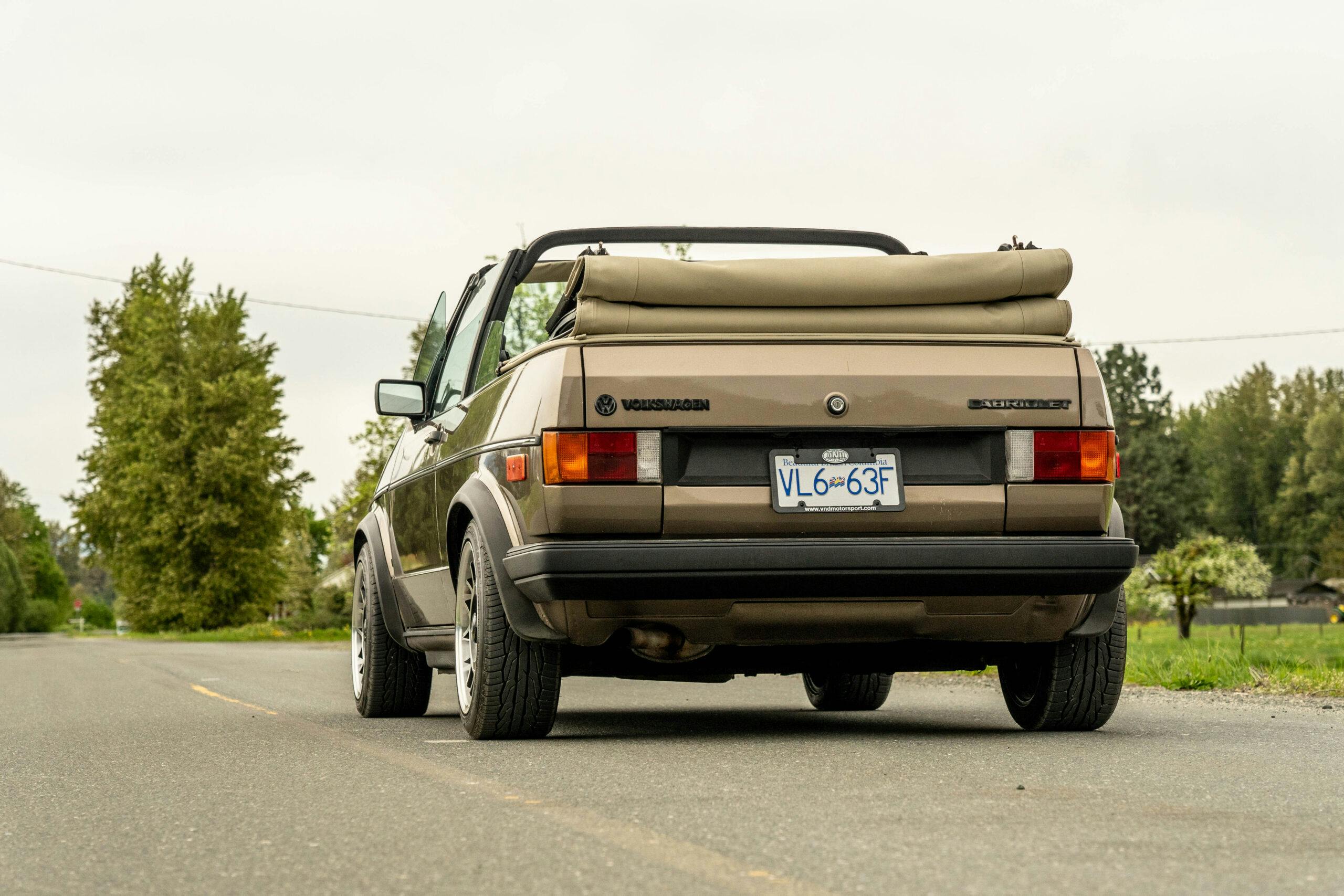Want to Feel Like a Kid Again? Get a Rabbit
Some things are just as much fun to experiencce as they look like they are going to be, and so it is with the first generation Volkswagen GTI. Gaze upon its tiny magnificence, that airy greenhouse, that dock-tailed terrier hatchback layout. Even the fuel cap is a work of genius, a little asterisk noting, *Achtung: contents may be habit forming.
Hop to it! Even in U.S.-spec trim with a 1.8L four-cylinder pumping out just 90 hp, this little bunny loves to scorch up the roads at what feels like ten million miles an hour. Everything’s square and Germanic and as sensible as a sweater vest, so why is this so much fun?
A group of road cyclists on a nearby path unclip their pegs while goggling, trying to wave us down. No chance, we’re at full commit around the roundabout, out the corner and upshift, glance at the speedometer and . . . wait, this is all perfectly legal?




Welcome to the joy of the definitive, if not the original, hot hatchback. For many enthusiasts, an early GTI (or even just the family Rabbit with a few go-fast parts) was that first flush of romance-on-wheels. You can say the same thing about the Mini Cooper for a generation before or the Honda Civic for the generation after, but the appeal of the Mk 1 Rabbit (neé Golf) is the kind of kid stuff some owners never grew out of. And you can see why. This thing’s a combustion-powered fountain of youth.
What cost, this sort of low-mileage perfection? First assumption to be corrected: The GTI you see here is not a low-mile car. It has nearly 200,000 miles on the odometer, yet still runs like a champ. Most of the paint is original—if you peer closely there’s a scuff or two—and adjusting the driver’s seat took a bit of wiggling. However, this little 1984 Rabbit GTI is even more perfect for those marks of character, and taken together they just add up to permission to drive the wheels off it. Which is what GTIs love to do.

“I bought it with my debit card,” says owner John Taylor. Those days are over now, as first-gen GTI prices are on the rise, but that is a more recent phenomenon, and there are plenty of owners like Taylor out there. He bought his first one in the 1990s and has essentially always had at least one in the fleet. VW enthusiasts tend to have several of them on the go. They are Rabbits after all. Famous for breeding. You turn around and suddenly you’ve got four of them.

This example does have a modified suspension, which adds to an even more jouncy, go-kart–like feel, but this is also one of the carefree elements of GTI ownership. Start tweaking things on other classic cars, and a gaggle of would-be concours judges come out of the underbrush, tutting and making notes on their clipboards. Keeping a Rabbit stock is appreciated in the VW community, but it is not a rule. Most owners adhere to a less-is-more philosophy, but there’s room for personalisation.
You could easily swap in a 16-valve engine from a later GTI, build up the brakes and suspension, and have a Rabbit capable of chasing down modern machinery. But there’s no need to add more power to get more enjoyment out of the car. The speed limit on the kind of windy roads this car is best on have not increased since it was new. The traffic on them does move quicker, but that just means you are making a qualifying run while everyone else around you is brains-off in their fridge-white crossovers.

There are many other ways to enjoy an iconic German sporting performance—an air-cooled Porsche 911, an E30 BMW M3—but your ticket to ride costs more. Even with the surge in Rabbit GTI prices in past years, it’s still easily within reach for the average collector. The market is waking up to the fact that pure driving experiential fun is harder to find in a modern form these days, and the early GTI was one of the last bargains out there.
And you don’t even have to get a GTI to have a fun little Rabbit runabout. This brown-on-brown 1985 Cabriolet is basically a rescue Rabbit. Owner Al Larson absolutely did not need another one in his home, already owning an Mk 1 and Mk 2 GTI, a Scirocco, a Eurovan, a Jetta, and all manner of other demands on time and money. But it was only $650 as a non-runner.
“I was like, well, I don’t need this at all, but I guess I’m going to have to go rescue this car,” he says.

The Cabriolet variant of the Rabbit is essentially a GTI with the roof cut off and an automatic transmission available as an option, which this one has. Cabs have a reputation as a girl’s car, in the same way some like to look down their noses at a first-generation Mazda Miata. Since when was being popular with the ladies a bad thing? And also, remember that Cyndi Lauper song?
Even with a three-speed automatic, the 1.8L engine has broad enough torque characteristics to not be slow. It’s not the kind of car you drive like a GTI, all pants-on-fire hurry, but it is the kind of experience where you can’t stop smiling like an idiot. This car would make Eeyore happy.




With the roof down, the Cabriolet is open to the elements in a way that modern convertibles really aren’t anymore. Drive a Boxster, and the windshield curves up into your field of view, with aerodynamics to keep the air from swirling around the cabin. In a 1980s Rabbit convertible, you might as well be driving around in one of those money-tornadoes from game shows. It’s a cross between a rollerskate and a hairdryer and it’s great.
The Golf is 50 this year, but the Mk 1 version doesn’t seem to know it. As a nameplate, the car grew up. Got heavier and more concerned with practical considerations.
Pop your favorite Duran Duran cassette in the tape deck and hit rewind. The first-generation Golf is still the essential hot hatchback, and there’s almost nothing else like it for making you feel like a kid again.




Still driving my rust-free (Arizona) ’84 Rabbit GTI with 2L 16V, aftermarket 6-speed and suspension mods but stock springs and wheels. Paid $5K for it in 1986. It’s a sleeper and a fun contrast to my 2017 Golf GTI Sport.
My ’84 GTI in silver over blue was bought as a year old, 20K mile used car. It had been run hard, and not well cared for, but all was soon put right. It had an aftermarket induction on it, don’t think it really added much for power, but it looked cool.
Kept the car for about a decade and another 160K miles, before using it as a trade-in on a new Suburban for hubby. Funny thing is – within 48 hours of the trade-in, I saw one of the Chevy dealer’s young mechanics flogging it around town with the biggest grin on his face.
Add the GTI to my list of ‘cars I wish I still had’.
I had a black Mk1 GTI and a graphite gray Mk1 Cabriolet. Yeah the cab was a “chick” car, fun to drive and yes, it was a “chick” magnet. The GTI was a different story. Pretty much stock drivetrain, but suspension goodies and waa-waa exhaust done. Drove that like a mad man. My first FWD. Welcome to torque steer!!! And yep, would love to have them both back in the stable.
Bought a black one with blue interior new in ’84 for $8400 cash. Fun car, but a little buzzy on the freeway which is why I sold it. It either needed overdrive or just another higher gear. Great build quality I thought.
Had a 79 Rabbit diesel. Blew it up racing my brother’s Chevy LUV. Now that was a race for the ages LOL. Dropped a euro GTI engine in it,added dual Webers, but kept the diesel badges on! Great sleeper at the time but couldn’t corner like my wife’s GTI!
Anyone who says that front wheel drive cars only understeer has never hustled a VW from this era. I remember taking offramps at 19 in my Mk2 Jetta in attitudes that I surely wouldn’t get away with today. Trailing throttle was enough to start sending it sideways if you were near the limit, most likely while kicking the inside rear wheel in the air. And despite having only 100 hp and being shaped roughly like a Kleenex box, the sticker on the door jamb specified two tire pressure values: one for when driving less than 100 MPH, and one for when exceeding it. 120 indicated was the best I ever saw on the surely-optimistic VDO speedometer – ironically a number I’ve yet to exceed in any other car.
I always longed for a GTI or GLI, but even the base models had the bones of an everyman’s driver’s car.
This is the kind of writing that keeps me reading about a vehicle I’ve never been interested in before. Thanks Brendan!